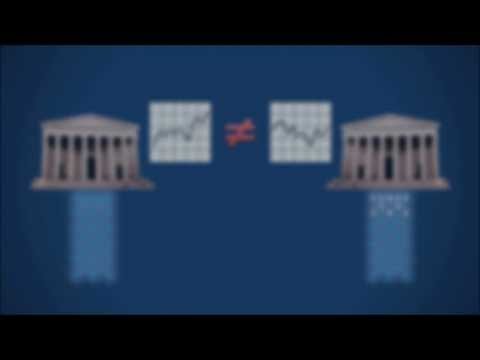Highfrequency trading tactic lowers investor profits
Post on: 30 Май, 2015 No Comment

Jun 17, 2013
High-frequency trading strategies that exploit today’s fragmented equity markets reduce investor profits overall, according to new findings by University of Michigan engineering researchers. The study is believed to be the first to examine how a common and lucrative trading practice known as latency arbitrage can exploit both market rules and the recent growth in the number of venues where stocks can change hands. The researchers will present the findings June 20 at the ACM Conference on Electronic Commerce in Philadelphia.
High-frequency trading firms use sophisticated algorithms and direct data lines to either predict market fluctuations or obtain early information about price changes. They’re responsible for more than half of all shares traded in U.S. stocks.
Latency arbitrage is a $21-billion-a-year tactic made possible by fragmentation—the shift from physical trading floors such as the New York Stock Exchange decades ago to dozens of competing electronic markets today. The strategy takes advantage of the time it takes for trade price information from the various markets to reach a central repository that publishes a public quote, known as the National Best Bid and Offer.
Established in 2005, this public ticker is one of several federal efforts aimed at reining in the effects of fragmentation. The Securities and Exchange Commission also mandates that the markets communicate and route orders to the place with the best price. But these efforts aren’t working as well as they could be, says Michael Wellman, U-M professor of computer science and engineering who led the study.
The public ticker is always a little bit out of date, Wellman said. The delay is inherent. It takes time to compute and to disseminate the information. You can reduce the delay, but you can’t get it down to zero.
High-frequency traders using latency arbitrage tactics look for price differences between the markets before the public ticker updates.
This video is not supported by your browser at this time.
Essentially, they can compute their own versions of the National Best Bid and Offer, which can then be exploited to generate risk-free profit, said Elaine Wah, U-M doctoral student in computer science and engineering and first author of the study.
Fragmentation isn’t the only aspect of the modern marketplace that’s clearing a path for these tactics. Latency arbitrage is only possible in a market where trades happen continuously, rather than at regular intervals such as every second.
The problem with continuous trading is there’s no lower bound on the time differences that matter, Wellman said. Winning a race by one microsecond is as good as winning by a minute.
These high-speed trades are happening at what Wellman calls superhuman, or sub-reality time scales—faster than anything relevant happens in the real world.
To examine the effects that continuous trading, latency arbitrage and public-ticker lag have on the U.S. market, the researchers ran sophisticated computer simulations. The simulations included two markets and one security, 250 regular investors and one high-frequency trader using latency arbitrage tactics. The study looked at the results of 200 simulation runs to compare systems with and without latency arbitrage, and with continuous and discrete-interval trading.
They found that in a fragmented, continuous market modeled after the current system, latency arbitrage diminished profits collectively—not just for regular investors, but also for high-frequency traders. The researchers say their model doesn’t support a specific dollar estimate of the reduction, but it clearly shows the direction of the effect.
Arbitrage in a continuous, fragmented system aggressively matches orders across markets at every opportunity, even when it would be more efficient to wait for better matches. The researchers recommend regulatory changes to move to a so-called centralized call market in which trades don’t execute continuously. Instead, orders accumulate and then clear based on the best matches determined at regular intervals.
Discrete trading would be more efficient, Wellman said. It leads to better trades happening and eliminates the latency arms race, which itself has large costs. We didn’t include those costs in the model, but it’s well known that these trading firms are spending billions to gain these speed advantages. As we’ve shown, this form of latency arbitrage serves no social purpose, and can even reduce the total profits in the system.
More information: The paper is titled Latency Arbitrage, Market Fragmentation, and Efficiency: A Two-Market Model. Study: web.eecs.umich.edu/srg/wp-cont 2013/02/ec38-wah.pdf














